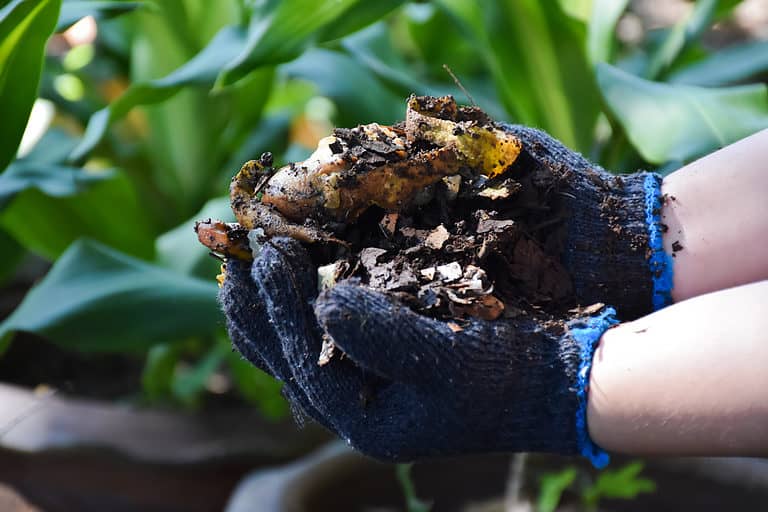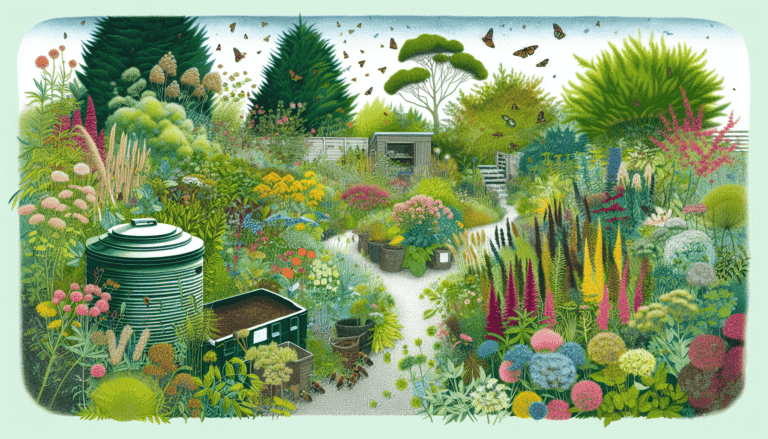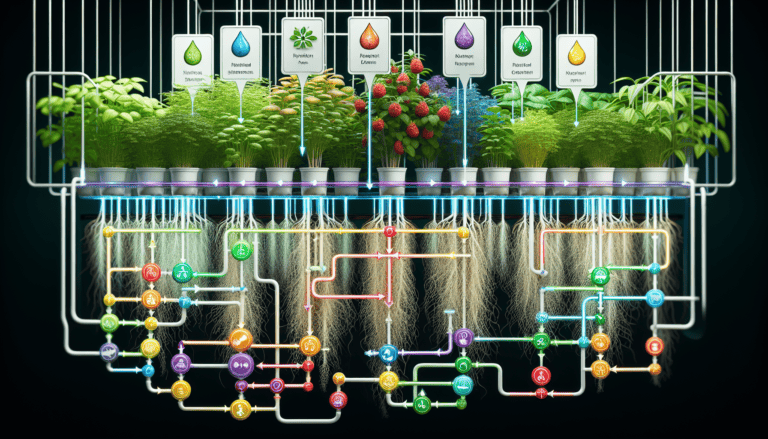Aquaponics Simplified: Easy Steps to Start Your Own System
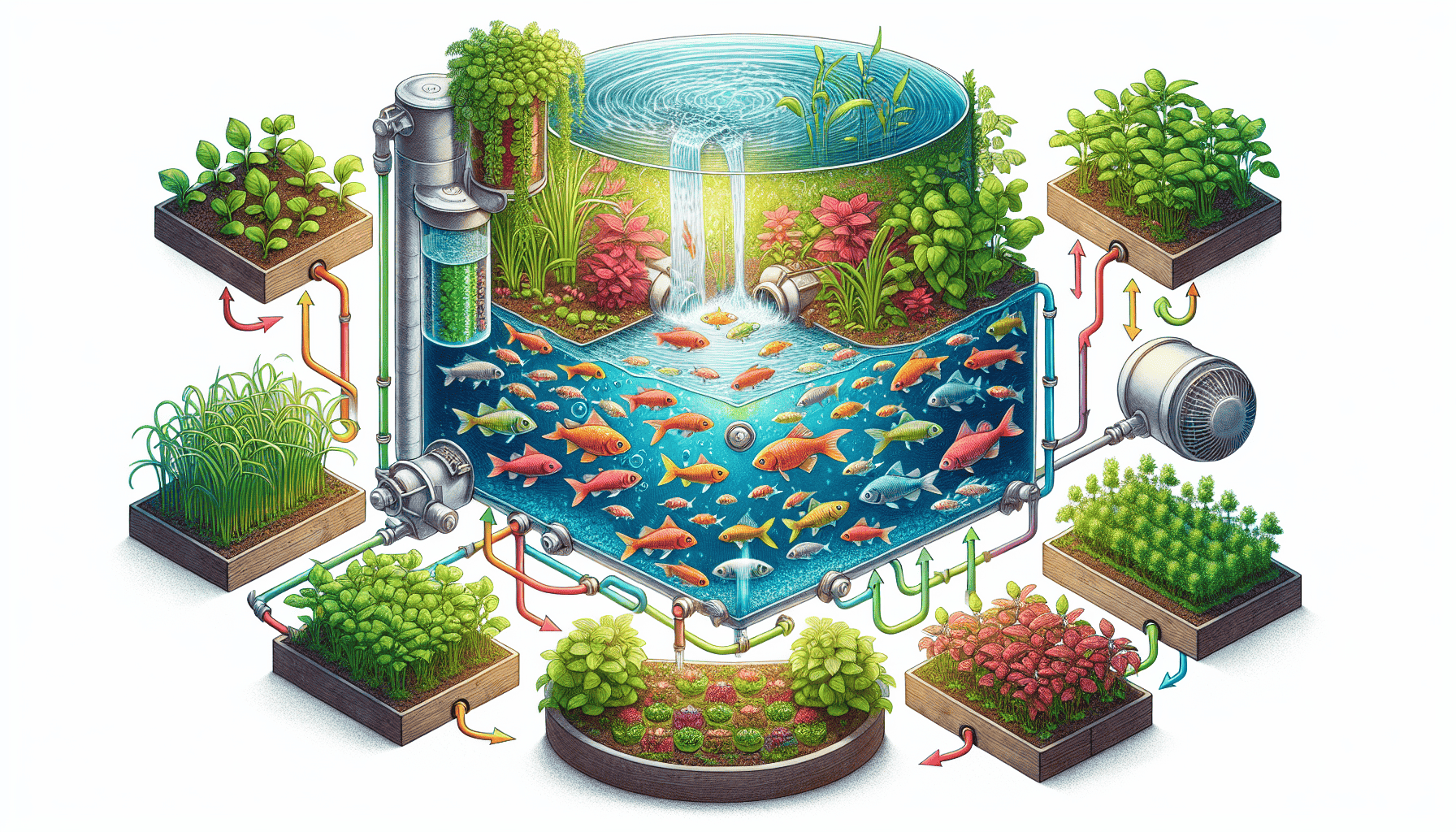
This article details the workings of aquaponics, an eco-friendly method to cultivate food that synergistically integrates fish and plants within a single system. The waste produced by the fish provides nutrients for the plant growth while in turn, plants purify the water for use by the fish. It outlines its advantages and guides you on how to initiate your own aquaponics configuration.
Key Takeaways
Aquaponics combines fish farming and plant growing in a sustainable, symbiotic system that minimizes water usage and eliminates chemical fertilizers.
Key components of a successful aquaponic setup include a fish tank, grow bed, water pump, and beneficial bacteria, creating a self-sustaining ecosystem.
Aquaponics offers flexibility for both beginners and experienced gardeners, with various system types and design ideas to fit any space while providing year-round food production.
What is Aquaponics?
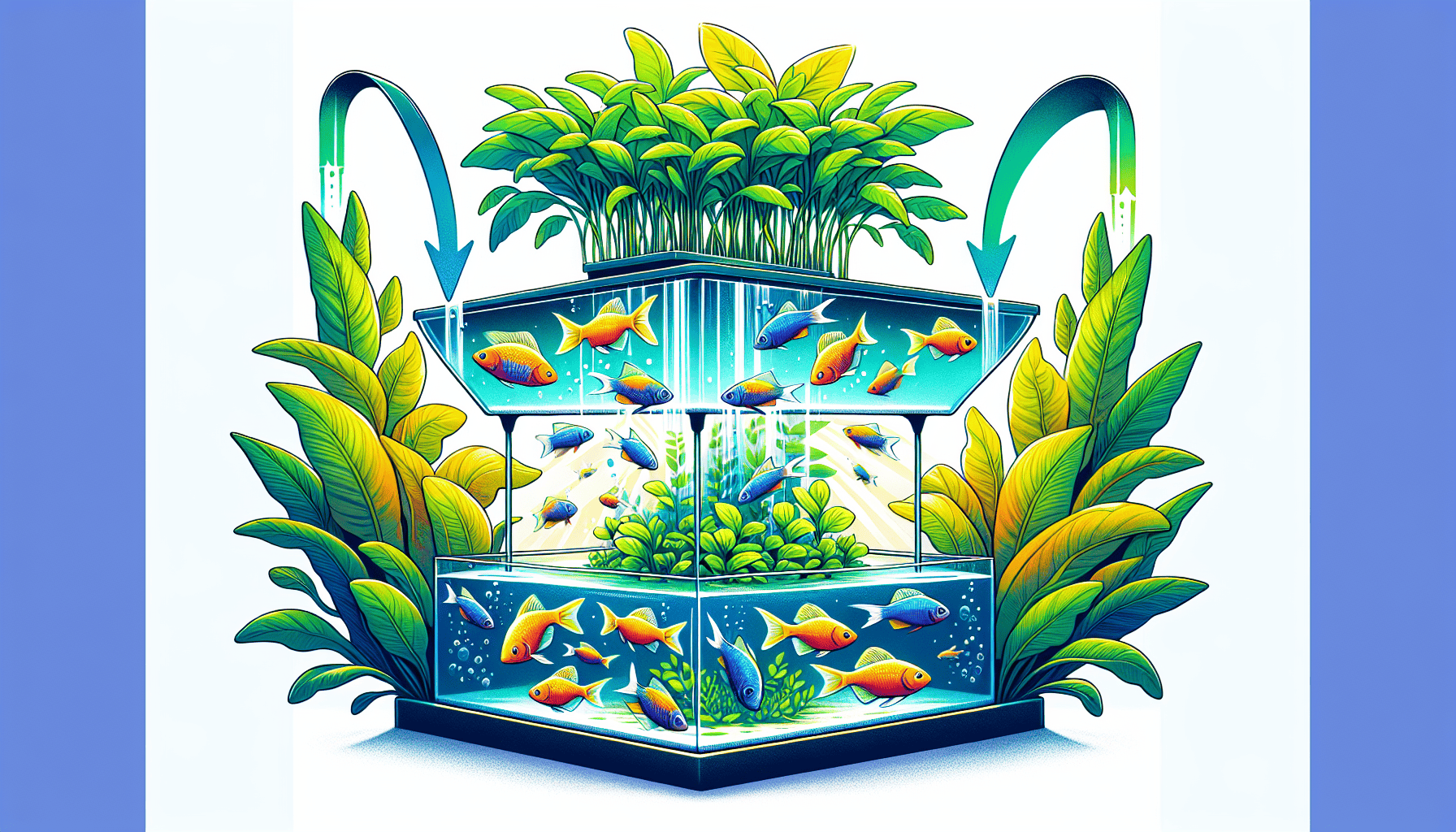
Aquaponics gardening combines the practices of aquaculture (raising fish) and hydroponics (cultivating plants in water without soil), creating a unified ecosystem. Within this integrated system, the reciprocal dynamic between fish and plants is pivotal. The waste produced by the fish acts as a natural fertilizer loaded with nutrients that bolster plant growth, while in return, the plants contribute to cleansing and maintaining healthy water for their aquatic companions.
In deploying such an eco-friendly method of growing food, there’s no reliance on chemical fertilizers since all necessary plant nutrients are organically derived from fish excreta. This harmonious arrangement produces an efficient way to grow food that’s both environmentally sound and yields high productivity—making it possible for individuals to raise both fish and plants effectively within their own domestic spaces for sustainable food production.
How Aquaponics Works
In an integrated aquaponic system, the symbiosis between fish, plants, and helpful microorganisms leads to a flourishing environment. The inhabitants of this ecosystem include fish contained within a tank whose waste emits ammonia as a byproduct. Although harmful in large quantities for the aquatic life, this very same waste stands as an essential source of nutrition for plant development.
Within this setup lies nitrifying bacteria that undertake the task of transforming ammonia first into nitrites and subsequently into more benign nitrates—a form readily utilizable by plant roots. As these rooted organisms consume available nutrients including nitrates from their surroundings, they simultaneously purify water which is then reintroduced into the habitation space of the fish. This dynamic exchange constitutes a continuous loop promoting robust growth for both fauna and flora inherent to the aquaponic system infrastructure.
Benefits of Aquaponics
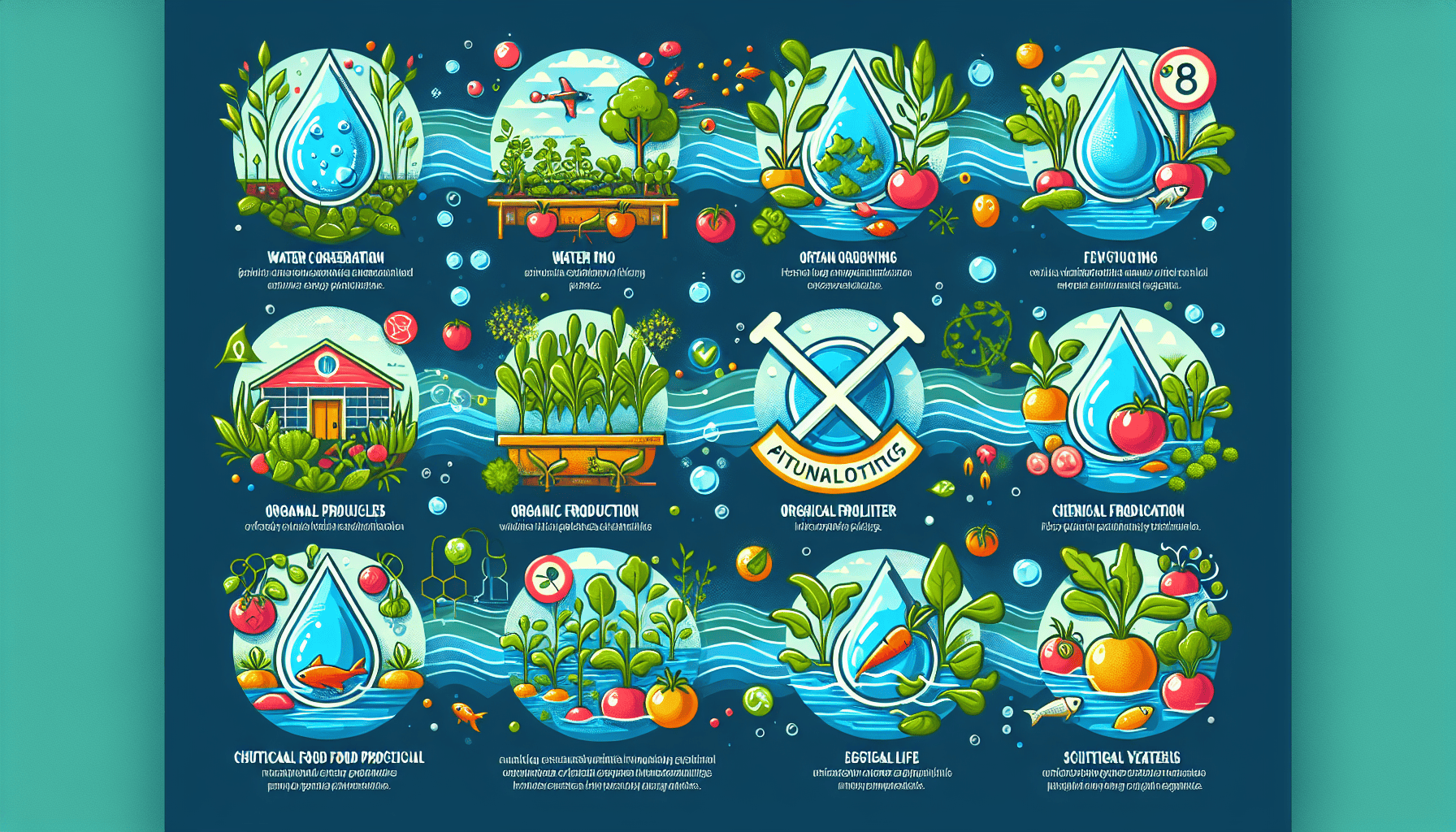
Aquaponic systems offer a remarkable advantage in terms of water conservation. Compared to conventional farming techniques, they can save up to 90% more water, rendering them ideal for regions where water is scarce. The recirculation of water within the system accounts for this exceptional level of efficiency as it eliminates the need for frequent additions.
Aquaponic systems facilitate food production throughout the year by enabling control over environmental conditions such as temperature, light intensity and humidity levels. This capability ensures a steady output of both vegetables and fish irrespective of seasonal changes—thereby ensuring a reliable supply chain while simultaneously decreasing reliance on chemical fertilizers and curtailing demands on our freshwater resources—a significant improvement over traditional methods in agriculture.
The beauty of aquaponics lies not just in producing fresh vegetables but also in rearing fish from one integrated setup. Thus providing diverse nutritional benefits from an aligned source. It’s an eco-conscious choice that contributes to reducing soil erosion and limits dependence on harmful pesticides—it stands out as an innovative solution promoting sustainable practices within our food ecosystem.
Key Components of an Aquaponic System

In constructing an effective aquaponic system, it’s crucial to comprehend the fundamental elements involved. At the core of this system lies the fish tank, which serves not only as a dwelling for your fish, but also as their contribution of nutrient-rich waste for plant sustenance. Mounted above this is the grow bed. You should ensure it has a depth ranging from 3 to 8 inches to provide sufficient room for the expansion and spread of plant roots.
Critical components include a water pump that ensures constant movement of water between your grow bed and fish tank along with nitrifying bacteria that are essential in transforming ammonia from fish excrement into useful nutrients suitable for plants. The role played by these microbes transforms your grow bed into more than just a structural component – it becomes an active bio-filter refining water before its journey back down to inhabitant fish.
These integral parts interrelate seamlessly within this environment, fostering both aquatic life and vegetation growth – endorsing harmony within your self-reliant aquaponic habitat.
Types of Aquaponic Systems
Numerous varieties of aquaponic systems exist, offering distinct benefits. Among the most prevalent are media based systems, raft systems, and Nutrient Film Technique (NFT) systems.
Your selection of an appropriate system for your aquaponics setup should be guided by the available space you have and what you aim to achieve with the system.
Media Based Systems
Among the various types of aquaponic systems, media based systems stand out for their straightforward design and efficiency. In such systems, plants are supported within grow beds filled with a medium—often expanded clay pellets, but sometimes gravel or lava rock as well. This medium offers ample surface area for beneficial bacteria to thrive. These bacteria play an essential role in converting fish waste into accessible nutrients for the plants.
Within these media bed setups, the grow bed serves as both a support structure for the plants and a filtration system. Water is circulated from the fish tank up into the grow bed where it percolates through clay pellets or other media, thus being purified before its return to where the fish reside. Not only does this cycle help sustain excellent water quality, but also ensures that there’s a constant delivery of nutrients critical for plant growth—all while maintaining overall system health.
Raft Systems
Deep Water Culture systems, commonly referred to as raft systems, excel in large-scale aquaponic gardening. These systems float plants on rafts, allowing their roots to be immersed in water rich with oxygen. The design is highly conducive for rapid growth of leafy greens and herbs.
An unbroken stream of nutrient-rich water courses beneath the floating platforms ensuring that plants receive a steady flow of nutrients while concurrently sustaining the quality of water. For individuals aiming to expand their ventures in aquaponic gardening, raft systems serve as an excellent asset.
Nutrient Film Technique (NFT) Systems
The Nutrient Film Technique (NFT) is a type of hydroponics where shallow currents of water, enriched with nutrients, circulate through horizontal channels. Net pots containing plants are situated along these channels so that the roots lightly graze the nutrient-laden stream, allowing for nutrient uptake while simultaneously keeping the roots oxygenated.
These NFT setups are especially beneficial in commercial aquaponics and densely populated urban settings where there’s a premium on space. They offer an effective method to cultivate diverse plant species and can be scaled according to agricultural needs ranging from compact personal gardens to expansive farming ventures.
Choosing Fish for Your Aquaponic System
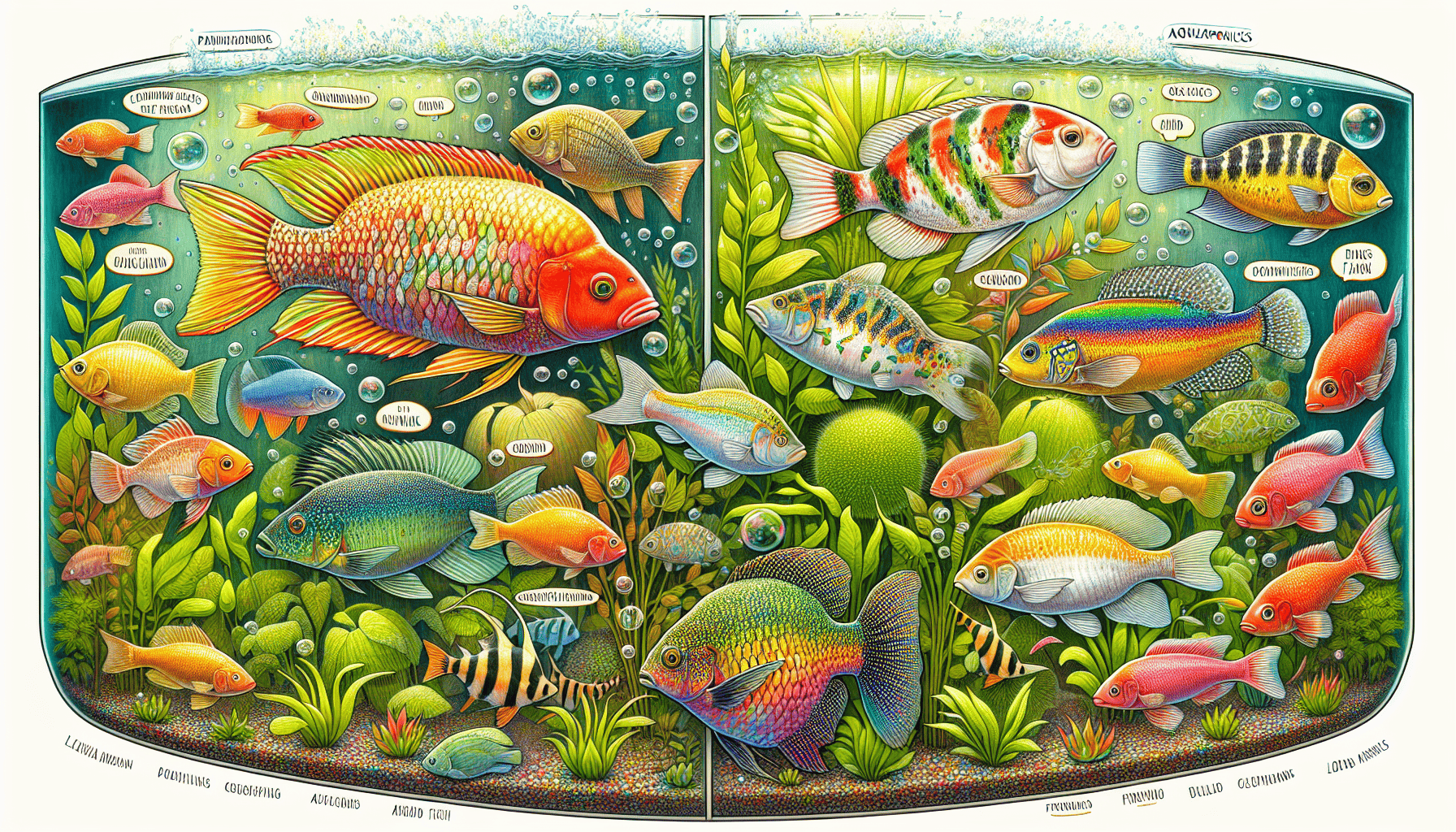
Selecting appropriate fish is essential for the success of your aquaponic system. Home systems often flourish with species such as tilapia, goldfish, koi, and several types of tropical fish due to their resilience and adaptability to the changing environment typical within an aquaponic setting.
When choosing fish for your system, it’s important to take into account various factors like water temperature requirements, pH levels in the tank, and any specific care that each type of fish may require. For instance, a 50-gallon fish tank can comfortably accommodate around 10 tropical fishes, which helps maintain a harmonious balance between the needs of both plants and aquatic creatures within the system.
Popular Fish Choices
Tilapia is often favored in aquaponic systems because of its swift growth rate and its ability to adapt to a range of environments. For those managing hobby-level systems, goldfish and koi are also preferred selections as they require minimal maintenance while providing an aesthetic value to the setup.
Choosing appropriate fish for your system is vital in sustaining a harmonious ecosystem. Variations in waste output and nutritional requirements among species can have significant impacts on plant development as well as the overall health of the system.
Selecting Plants for Aquaponics
In an aquaponic system, opting for plants such as leafy greens and herbs is highly recommended. Varieties including lettuce, basil, and mint are well-suited to the conditions in aquaponics due to their minimal nutrient needs. These types of plants are particularly suitable for those who are new to operating such systems.
It’s important to ensure that the chosen plants harmonize with both the fish species present and the specific environment of your aquaponic setup. Speaking, leafy vegetables along with herbs flourish within a range of these systems. They deliver a steady yield rich in nutrients.
Best Plants for Beginners
If you’re just beginning your journey with aquaponic systems, it’s crucial to opt for plants that grow quickly and require minimal upkeep. Leafy greens, including varieties like lettuce and kale, are perfect candidates because they thrive rapidly while having modest requirements for nutrients. Herbs such as basil and mint can also be excellent choices since they not only flourish in these systems but can also elevate the flavors of your dishes.
For novices, it’s advisable to steer clear of fruit-bearing species like tomatoes at first—they need more extensive systems packed with greater nutrient supplies, which may pose a bit of a challenge for those new to managing these intricate setups. Concentrate on cultivating plants that have lesser root zones congruent with the specifications of the aquaponic system you’ve chosen.
Setting Up Your First Aquaponic System
Embarking on the establishment of your first aquaponic system can seem intimidating, but with a methodical approach, it becomes an enjoyable and successful venture. Opt for a location that is equipped to manage potential water spills and possesses adequate drainage facilities. It’s imperative that this area also has exposure to natural light along with stable temperature conditions since both elements are vital for maintaining healthy fish and plant life.
In preparation, procure key equipment including a suitable fish tank, grow bed, and water pump. Create an appropriate environment for plants using substrates such as rockwool in your grow bed while ensuring proper liquid flow. Before adding any fish into the mix, you must cycle your tank to establish ecological harmony characterized by minimal concentrations of ammonia and nitrite.
As soon as equilibrium within your setup is attained—with low ammonia plus nitrite levels—you’re ready to integrate the fish into this nurturing space where they can thrive alongside plants through aquaponics procedures. Should you be intent on focusing efforts toward rearing fish without extensive system construction or maintenance complexities: purchasing all-in-one aquaponics kits might serve as a pragmatic option. These pre-assembled packages come complete with necessary components coupled with instructional guides tailored for seamless adoption.
DIY Aquaponics Systems
For DIY enthusiasts, creating your own aquaponic system can be a fun and educational experience. You can repurpose items like a bathtub or food-grade barrels to build an effective and budget-friendly system. Using recycled materials is both cost-effective and environmentally friendly, making your DIY aquaponics system even more sustainable.
Building a simple one-barrel system or a bathtub setup requires basic tools like a drill and jigsaw. Following a step-by-step guide with photos and explanations can help you through the process, ensuring you create a functional and efficient system.
Remember, the key to success is patience and a willingness to learn from trial and error.
Maintaining Your Aquaponic System
To keep an aquaponic system operating successfully, it’s essential to consistently monitor and maintain the health of both fish and plants. To facilitate optimal performance in your system, aim to maintain a water pH around 7.0 by conducting regular tests. It is critical to track ammonia and nitrite levels because any variation can jeopardize the wellbeing of your fish and hinder plant development.
Keeping a weekly log of how well your plants are growing will alert you early on if they’re experiencing any nutritional shortages or other issues. Maintaining clear water quality requires routine cleaning of both filters and the fish tank itself in order to prevent excess waste accumulation. Regularly examining the fish for signs of sickness helps stop potential diseases from spreading throughout the entire system.
Committing once a year to thoroughly clean every part of the aquaponic setup ensures its efficient operation over time. Through careful upkeep, you’ll be able to achieve sustained productivity within your aquaponic ecosystem all through the calendar year.
Troubleshooting Common Problems
Aquaponic systems, despite meticulous care, can still run into complications. Ammonia spikes represent a common challenge and are typically the result of fish excreting waste at rates that overwhelm the system’s bacterial capacity. To combat this issue, it is important to conduct regular checks on ammonia concentrations and modify how much you feed your fish if necessary. Decreasing feeding quantities or augmenting plant populations might help restore equilibrium in the system.
Another prevalent problem within aquaponic setups is suboptimal growth of plants, which often stems from unbalanced nutrients, inadequate lighting conditions or poor water circulation. Remedying such issues involves assessing nutrient content in the water supply, making sure grow lights operate efficiently, and tweaking water flow as needed. Effectively managing pH levels and upholding an even-keeled ecosystem stands central to diagnosing these routine challenges and safeguarding against them.
Expanding Your Aquaponic Setup
As your proficiency in operating your aquaponic system improves, you may think about expanding the setup to amplify production. It’s essential to approach expansion with strategic planning because it demands additional space as well as higher water and energy needs. To efficiently handle the heightened requirements, begin by slowly incorporating more fish tanks or grow beds into your system.
The economic success of scaling up frequently depends on the upfront capital required for establishing a larger-scale operation. Confirm that you possess both the necessary resources and infrastructure capable of sustaining an expanded arrangement.
Approaching growth methodically and progressively can make augmenting your aquaponic system not only satisfying but also fruitful.
Design Ideas for Home Aquaponics
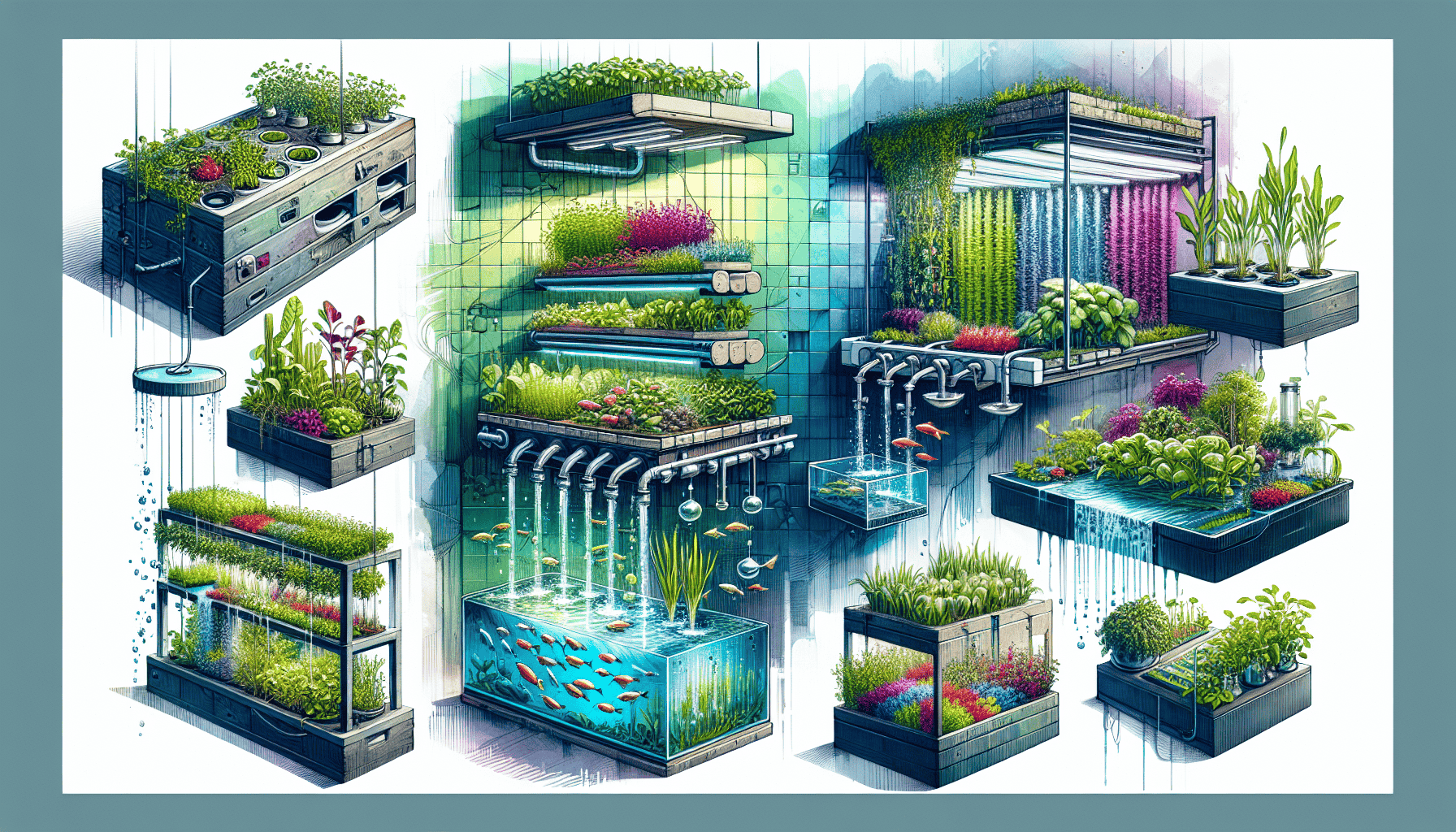
Embarking on the creation of a personal aquaponics system can be both thrilling and imaginative. In cities where space is at a premium, vertical aquaponic towers present an optimal solution by allowing grow beds to be vertically arrayed, thereby enhancing spatial efficiency. The use of food-grade barrels in barrelponics provides another space-saving and effective model suitable for compact urban environments.
DIY enthusiasts keen on incorporating aquaponics within their homes can employ shelfponic systems that utilize shelving units to establish several tiers for plant growth. For more constrained areas like countertops or office desks, mason jar aquaponics—employing quart-sized jars along with straightforward components—is ideal. These tiny systems are capable of nurturing various herbs while adding aesthetic value.
Inventive design approaches include repurposing old bathtubs or blending existing aquariums with your setup as part of expanding into home-based agriculture through aquatic means. By salvaging materials such as discarded windows and doors, you can construct a distinctive greenhouse environment specifically tailored for your own self-sustaining food production system using reclaimed items — all rendering the venture into domestic aquaponic farming attainable and fulfilling.
Commercial Aquaponics
Aquaponic systems present a substantial opportunity for the efficient production of large amounts of food. These systems, which combine fish farming with plant cultivation within recirculating aquaculture setups, stand out as sustainable solutions capable of supporting high-volume food generation. The success and appeal of this method are underscored by the sale of over 600 Clear Flow Aquaponic Systems® across 30 nations.
The effectiveness inherent in commercial aquaponics stems from its utilization of water rich in nutrients while circumventing heavy reliance on chemical fertilizers. This optimization of resources alongside minimized environmental impact positions these systems to significantly bolster global food security and promote sustainability in the realm of food production.
Summary
The aquaponic system offers a novel method to cultivate healthy, eco-friendly food by harmonizing the relationship between fish and plants within a self-sustaining loop. This comprehensive guide has taken you through the essentials from grasping fundamental concepts to establishing your initial setup and its expansion. With proper selection of both fish and plant species, meticulous care for your system, along with addressing any prevalent issues effectively, you’ll be able to foster an abundant and resourceful garden powered by aquaponics.
For enthusiasts aiming at personal enjoyment or individuals aspiring towards larger-scale commercial endeavors, aquaponics presents an environmentally conscious approach for year-round food production. Embark on this endeavor with enthusiasm—letting your aquaponic system flourish could not only yield ample crops, but also strengthen your commitment to ecological farming practices.
Frequently Asked Questions
What are the key benefits of aquaponics over traditional agriculture?
Aquaponics presents an exceptional substitute for conventional farming methods by reducing water usage by as much as 90%, allowing for continuous production throughout the year, and avoiding the use of chemical fertilizers—thereby fostering a sustainable and efficient approach to agriculture.
Adopting this technique can pave the way toward a future that prioritizes health and is mindful of resource utilization!
Which fish are best for a beginner’s aquaponic system?
Hardy and adaptable, tilapia, goldfish, and koi make superb selections for those new to aquaponic systems. Their robust nature enhances both the enjoyment and success of your initial experience.
Dive into the delightful world of aquaponics with these durable fish species!
What plants should I start with in my aquaponic system?
Beginning your aquaponic system with fast-growing and easily thriving leafy greens, including lettuce, alongside herbs like basil and mint, can quickly bolster confidence in the effectiveness of your setup.
How do I maintain the water quality in my aquaponic system?
Regularly monitoring pH, ammonia, and nitrite levels is crucial for maintaining a flourishing aquaponic system. Ensure to clean the fish tank and filters as part of this routine.
Such diligent maintenance fosters a vibrant ecosystem that benefits both the plants and fish in your system!
Can I expand my aquaponic system over time?
Certainly! It’s possible to gradually increase the size of your aquaponic system by incorporating additional grow beds or fish tanks.
Ensure that you meticulously prepare for the extra requirements that will come with enlarging your system.

